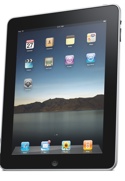Your iPhone or Apple Watch could one day nag you that you’re not working out enough. I’m kidding (well, kinda), but Apple has filed for a patent (number US 20240041354 A1) for “Tracking Caloric Expenditure Using a Camera” to tell you how many calories you’re burning (or not).
About the patent filing
In the patent filing Apple notes that tracking devices (e.g., smartphones and smartwatches), include motion sensors that are used by fitness applications to estimate the caloric expenditure of a user during physical activity. In some fitness apps, motion data from the motion sensors (e.g., acceleration, rotation rate) are used with an energy expenditure model to estimate the amount of calories burned by the user during a workout. Some applications also use a heart rate sensor in combination with the energy expenditure model to estimate calories burned. These fitness apps require that the tracking device be worn on the body of the user, which is typically the wrist, chest, torso or foot.
Apple wants to take things a step further. Per its patent application, in the future you could point an Apple Watch or iPhone camera at your face. The devices would then measure things such as your step cadence, stride length, energy expenditure, and more.
Apple says the advantages of such a feature include 1) providing a real-time treadmill fitness experience using the front-facing camera of a tracking device (e.g., a smartphone) when the device is not worn by the user; 2) track caloric expenditure during the user’s workout using speed and grade estimated using a single camera; and 3) no need for body-worn sensors (e.g., a smartwatch) or fitness machine connectivity.
Summary of the patent filing
Here’s Apple’s abstract of the patent filing: “he enclosed embodiments are directed to tracking caloric expenditure using a camera. In an embodiment, a method comprises: obtaining face tracking data associated with a user; determining a step cadence of the user based on the face tracking data; determining a speed of the user based on the step cadence and a stride length of the user; obtaining device motion data from at least one motion sensor of the device; determining a grade of a surface on which the user is walking or running based on at least one of the device motion data or the face tracking data; and determining an energy expenditure of the user based on the estimated speed, the estimated grade and a caloric expenditure model.”
Article provided with permission from AppleWorld.Today




